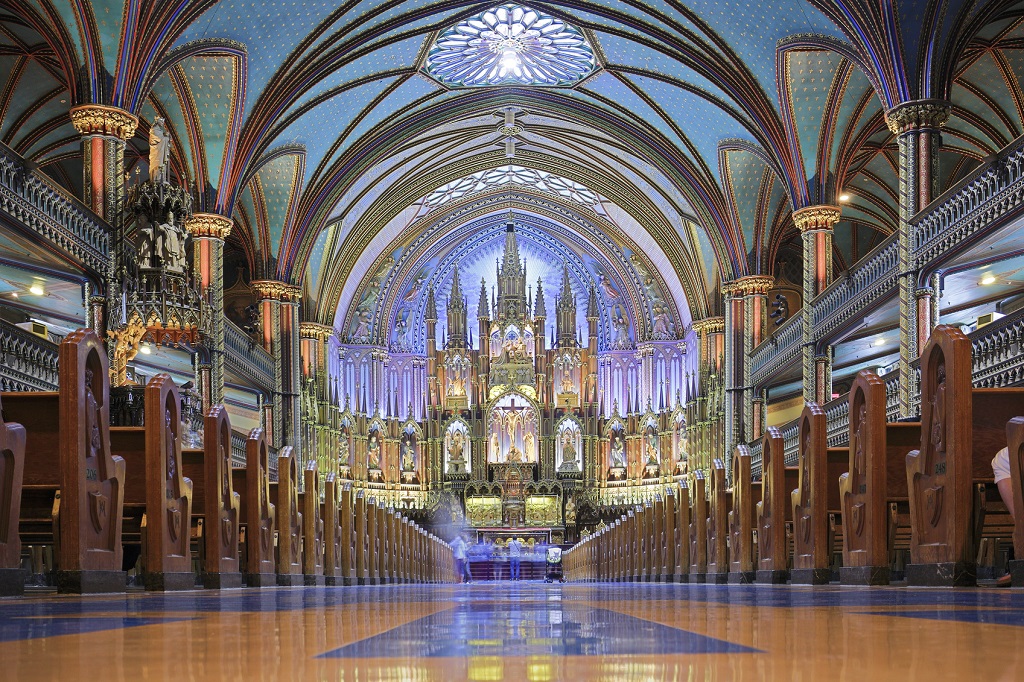The city of Montreal is the best of both worlds: formed in the rich history of Europe and North America. Notre-Dame Basilica stands as a monument to this heritage, but also as living testimony to the Catholic heritage of this beautiful city.
The original church was constructed between 1672 and 1683, while the current basilica was built between 1824 and 1829. Its Gothic Revival style was the first of its kind for Canada, and at the time it was built, the basilica was the largest church of any denomination in all of North America. (Today, it can hold 4,000 worshipers.) The basilica houses the Chapel of Notre-Dame du Sacré-Cœur (Our Lady of the Sacred Heart), used for smaller congregations, weddings and funerals. However, in 1978, the chapel suffered severe fire damage.
Reconstruction was undertaken by the architectural firm of Jodin, Lamarre, Pratte and Associates, whose plan suggested rebuilding the first two levels to be identical to the original chapel, with skilled carpenters, sculptors and woodworkers using traditional methods. The vault was built in a modern style allowing for natural lighting. The new chapel was opened in 1982.
The basilica’s main mission is to spread the Gospel. Aside from celebrating Mass and offering the sacraments, the basilica’s art is a feast for eyes and souls. The basilica “preaches” through the art of its side altars, high altar, its stained glass and its pulpit.
The pulpit is one of the Basilica’s greatest ornaments. In earlier times, the priest would mount the steps to deliver his sermon. From his position above the congregation, his voice could be heard throughout the church, without electronic amplification. The architect Victor Bourgeau (1809–1888) designed this pulpit during the renovations of the 1870s. The renowned sculptor Louis-Philippe Hébert (1850–1917) created the ornamentation, particularly the two ground-level figures of the Old Testament prophets Ezekiel and Jeremiah. As with the altarpiece, the pulpit signifies that the Old Testament of the Bible is the basis of Christian faith.
Above, on the skirting of the pulpit, is a series of smaller statures representing Christ seated and teaching, Saints Peter and Paul, and other religious themes.
Beneath the canopy appears the dove, the symbol of the Holy Spirit, leading the faithful to be receptive and obedient to God’s inspiration, and guiding through their life of faith.
On the canopy four Church Fathers appear: two from the West: Saint Augustine (4th century) and Saint Leo the Great (pope, 6th century) – and two from the East: Saint Basil the Great (4th century) and Saint John Chrysostom (4th century). These confirm the Church’s traditional fidelity to its origins
Completing the pulpit’s symbolism is a statue representing Faith as a young woman holding a cross in one hand and a chalice (the Mass) in the other.
This amazing basilica is truly one of the treasures of the universal church.
